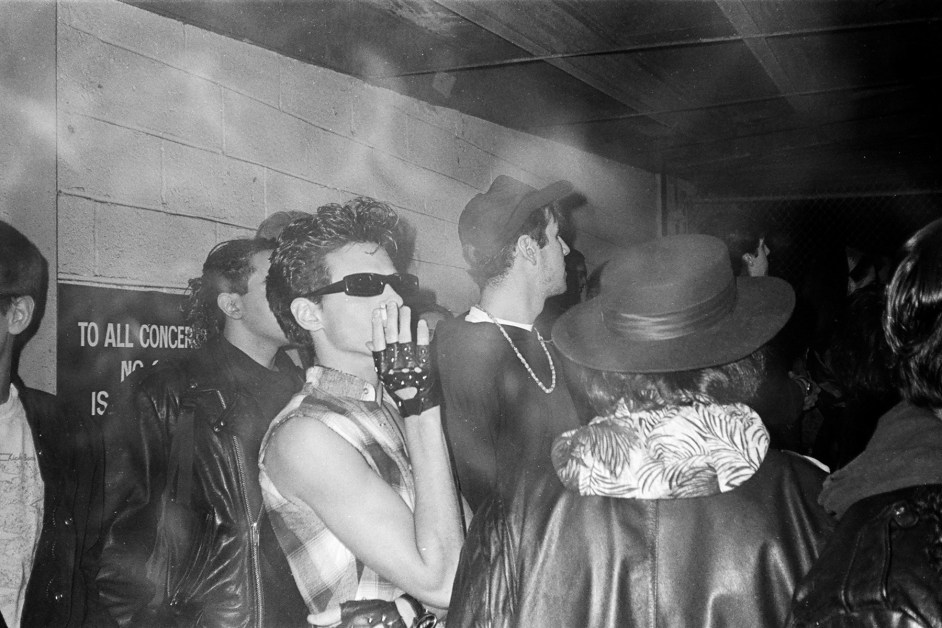Business
Live Music Transformed: 35 Years Since First Indoor Smoking Ban

The landscape of live music venues has undergone a significant transformation since the first indoor smoking ban was implemented in San Luis Obispo, California, 35 years ago. This landmark moment marked a shift that has not only enhanced the experience for concertgoers but has also positively impacted business for venue owners.
Bruce Finkelman, the owner of Chicago’s Empty Bottle, recalls a time when the air was thick with cigarette smoke. When he opened the venue in 1993, it embodied the gritty atmosphere of a rock club, complete with the “small, dark, smoky jazz room” aesthetic. Today, however, Finkelman embraces a smoke-free environment, stating, “Even if I smell smoke, I’m like, ‘Ugh.’”
The initial indoor smoking ban, which took effect in 1988 in San Luis Obispo, has since led to similar regulations across the United States. Cities like New York and Chicago adopted their bans in 2003 and 2006, respectively, while North Dakota implemented a statewide ban in 2012. During this period, the live music industry has experienced remarkable growth. According to Billboard Boxscore, the top 100 concert tours grossed just $674.5 million in 1990, but this amount surged to an astonishing $10 billion last year, representing an increase of 1,383%.
Promoters and health experts attribute this growth, at least in part, to the elimination of secondhand smoke in venues. Dr. Stephen Hansen, a former director at Sierra Vista Regional Medical Center, played a key role in advocating for the smoking ban in San Luis Obispo. He asserts, “It’s part of the equation,” noting that many patrons today would not want to be in crowded spaces where smoking is permitted.
Joe Shanahan, owner of the long-standing Chicago venue Metro, concurs, stating, “It really did help business. I believe there is a direct correlation.” He notes that parents are now more comfortable taking their children to all-ages shows, free from concerns about secondhand smoke exposure.
Reflecting on the early battles against Big Tobacco, Hansen recalls facing fierce opposition, including threats and accusations from local bar owners. Some claimed that smoking customers would simply migrate to nearby cities, while others compared the ban’s proponents to “Communists.” Just before the city council voted on the ban, R.J. Reynolds Tobacco Company even distributed fliers urging residents to oppose what they termed “an outrageous attack on your rights!”
The groundwork for indoor smoking bans was laid decades earlier, with the U.S. Surgeon General’s 1964 report linking smoking to lung cancer. Following this, various states enacted limited bans, but it was in San Luis Obispo where the first comprehensive ban faced and overcame significant resistance. Hansen recalls receiving death threats during his campaign, demonstrating the intensity of the opposition.
As the influence of the San Luis Obispo ban spread, it served as a model for countries abroad. Ireland took note of the California example before implementing its own national smoking ban in 2004. Luke Clancy, director general of the Tobacco Free Research Institute of Ireland, highlighted how public attitudes were shifting; many pub workers welcomed the ban, expressing relief that their voices would be preserved.
Numerous studies have concluded that smoking bans have effectively decreased exposure to secondhand smoke and have contributed to reductions in lung cancer rates over the past few decades. Jessica Cance, a public health researcher at RTI International, emphasized the positive public health outcomes of these bans, stating, “The data are very clear that smoking bans have been effective for public health.”
Club owners and promoters report immediate benefits following the bans, with many noting that initial fears of decreased attendance proved unfounded. Shanahan recounted how, prior to the ban, his staff often fell ill, likely due to smoke exposure. The implementation of the smoking ban resulted in improved health for employees and a noticeable uptick in business.
The Gothic Theatre in Denver was once filled with smoke, making visibility difficult from the balcony. Doug Kauffman, a promoter for the venue, remarked on the initial concerns about the ban’s potential negative impact on business. He articulated a straightforward sentiment: “What business owner in his right mind wants to kill his customers?”
During the 1990s, the smell of smoke permeated many iconic venues like D.C.’s 9:30 Club, where patrons accepted the grungy atmosphere as part of the experience. However, Donna Westmoreland, the chief operating officer of I.M.P., which promotes events at the club, reflected on the positive changes that followed the smoking ban in 2006. She suggested that while the ban may not have been the sole factor influencing attendance, it certainly contributed to a more enjoyable environment, stating, “It might have just felt a little nicer as a result.”
As the music industry continues to thrive in a smoke-free atmosphere, the legacy of the indoor smoking ban endures. This shift not only prioritizes public health but also enhances the overall experience for artists and audiences alike, paving the way for a more vibrant and inclusive live music scene.
-

 Top Stories2 weeks ago
Top Stories2 weeks agoMarc Buoniconti’s Legacy: 40 Years Later, Lives Transformed
-

 Health3 weeks ago
Health3 weeks agoInnovative Surgery Restores Confidence for Breast Cancer Patients
-

 Sports4 weeks ago
Sports4 weeks agoSteve Kerr Supports Jonathan Kuminga After Ejection in Preseason Game
-

 Science4 weeks ago
Science4 weeks agoChicago’s Viral ‘Rat Hole’ Likely Created by Squirrel, Study Reveals
-

 Entertainment4 weeks ago
Entertainment4 weeks agoZoe Saldana Advocates for James Cameron’s Avatar Documentary
-

 Top Stories2 weeks ago
Top Stories2 weeks agoBOYNEXTDOOR’s Jaehyun Faces Backlash Amid BTS-TWICE Controversy
-

 Politics4 weeks ago
Politics4 weeks agoDallin H. Oaks Assumes Leadership of Latter-day Saints Church
-

 Lifestyle4 weeks ago
Lifestyle4 weeks agoKelsea Ballerini Launches ‘Burn the Baggage’ Candle with Ranger Station
-

 Business4 weeks ago
Business4 weeks agoTyler Technologies Set to Reveal Q3 2025 Earnings on October 22
-

 Health4 weeks ago
Health4 weeks agoCommunity Unites for Seventh Annual Mental Health Awareness Walk
-

 Business3 weeks ago
Business3 weeks agoZacks Research Downgrades Equinox Gold to Strong Sell Rating
-

 Health3 weeks ago
Health3 weeks ago13-Year-Old Hospitalized After Swallowing 100 Magnets









